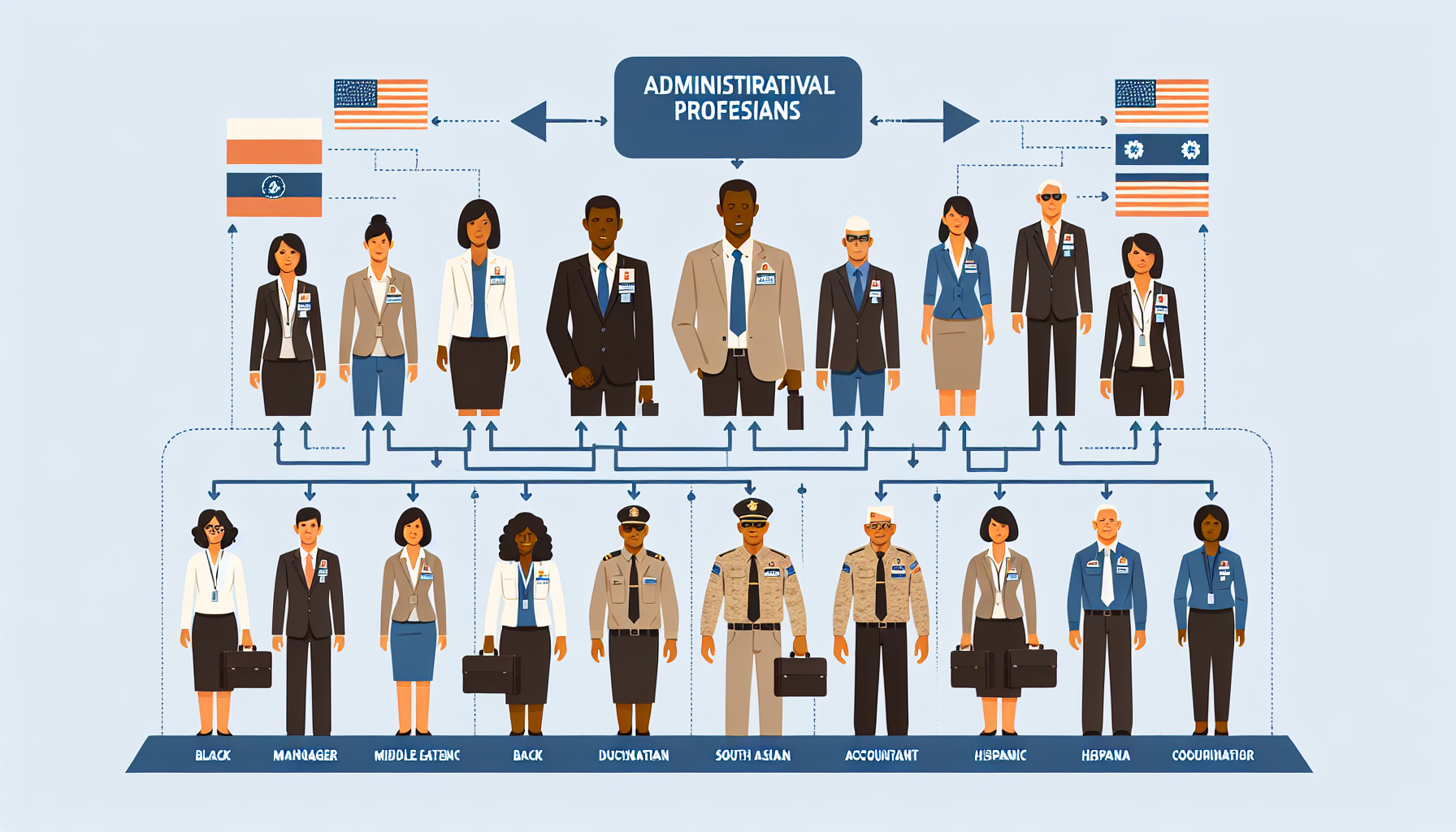Definition
The administrative chain of command refers to the hierarchical structure within a military organization that deals with non-operational matters, such as personnel management, logistics, and resource allocation. It establishes the lines of authority and communication for the coordination and execution of administrative tasks, separate from the operational chain of command. The administrative chain of command plays a critical role in supporting operational missions, ensuring smooth functioning and readiness of military units.
Key Takeaways
- The administrative chain of command refers to the formal hierarchy within a military organization, determining the lines of authority and communication.
- This command structure is essential for ensuring that orders and decisions flow effectively from higher-ranking officers to those responsible for executing tasks, thus maintaining order and discipline within the military.
- While the administrative chain of command primarily deals with non-combat-related tasks such as personnel management, training, and logistics, it is still crucial to the overall efficiency and success of military operations.
Importance
The administrative chain of command is essential in military operations because it establishes a clear hierarchy and structure of authority, ensuring smooth communication, effective decision-making, and efficient execution of tasks across various levels.
This hierarchical framework creates a streamlined process for receiving and disseminating information, managing resources, dealing with personnel matters, and coordinating logistical support.
It promotes accountability, transparency, and enhances cooperation through well-defined roles and responsibilities, ultimately contributing to the success and security of military missions.
Without a robust administrative chain of command, military institutions would face significantly increased risks of miscommunication, delayed decisions, and overall operational inefficiency.
Explanation
The administrative chain of command serves as a crucial framework within military operations as it ensures clear and effective communication, coordination, and management amongst personnel. Its primary purpose is to delineate the proper channels of authority and decision-making throughout the different levels and units of the armed forces.
By establishing a well-defined hierarchy and set of protocols, the administrative chain of command guarantees that orders are executed accurately and consistently, thereby maintaining a high level of discipline, operational readiness, and overall mission success. In addition to facilitating decision-making and information flow, the administrative chain of command is essential for the proper allocation and utilization of resources, personnel management, and logistical support.
This structure enables military leaders to effectively oversee and evaluate the performance of their subordinates while promoting accountability and responsibility. Furthermore, it provides a clear framework for service members to address grievances, report misconduct, or request assistance, thus empowering individuals and promoting a fair and just work environment.
Overall, the administrative chain of command plays a crucial role in promoting organization, discipline, and unity within the military forces, ultimately allowing them to carry out complex missions and secure the safety and well-being of the nations they serve.
Examples of Administrative chain of command
United States Military Academy at West Point: The Superintendent, a senior military officer, oversees the administration and organization of the entire academy, including academic, military, and athletic aspects. The Superintendent is supported by a cadre of officers, including the Commandant of Cadets, responsible for military training, the Dean of Academics, responsible for the academic curriculum, and the Athletic Director, who manages the academy’s athletic programs. This administrative chain of command is essential in ensuring the smooth operation of West Point and maintaining its high standards.
The 438th Airlift Wing, U.S. Air Force: At the 438th Airlift Wing, an administrative chain of command ensures the readiness and deployment of the wing’s aircraft and personnel. The Wing Commander oversees overall operations, and their staff consists of groups responsible for various aspects, such as the Operations Group, which manages day-to-day flying operations and maintenance, and the Mission Support Group, which handles administration, personnel, and logistics. This chain of command helps coordinate the wing’s diverse responsibilities and ensures top-notch support to the Air Force mission.
Hospital Ships in the U.S. Navy (ex: USNS Comfort): The administrative chain of command on Navy hospital ships, such as the USNS Comfort, ensures that the ship is fully prepared to support diverse medical and humanitarian missions across the globe. The ship’s Commanding Officer is responsible for overseeing all shipboard activities and ensuring the availability of medical and support staff. The medical staff on the ship, including doctors, nurses, and administrators, are organized into functional departments such as surgery, radiology, and dental, with specialized officers in charge of each. This administrative structure enables the efficient delivery of medical care in crisis situations and ensures that ship’s mission is executed effectively.
FAQ Section: Administrative Chain of Command
Q1: What is the Administrative Chain of Command?
A1: The Administrative Chain of Command is a formal hierarchy within a military organization, responsible for addressing administrative matters such as personnel management and administrative support. It aims to ensure smooth functioning and coordination among different units and servicemembers.
Q2: How does the Administrative Chain of Command differ from the Operational Chain of Command?
A2: The Administrative Chain of Command focuses on non-combat tasks and activities related to administration, personnel management, and support functions. In contrast, the Operational Chain of Command primarily deals with decision-making and command related to combat, tactical missions, and force deployment.
Q3: Who is typically at the top of the Administrative Chain of Command?
A3: In most military organizations, the highest-ranking officer, such as the Chief of Staff or the Chief of Defence, is at the top of the Administrative Chain of Command. They are responsible for overseeing all administrative matters and ensuring effective coordination within the military organization.
Q4: How does the Administrative Chain of Command maintain order and discipline within the military?
A4: The Administrative Chain of Command ensures proper functioning of the military by establishing clear lines of authority and responsibility. Servicemembers are expected to follow orders and regulations set forth by their superiors, which contributes to a structured and organized environment. This helps maintain order and discipline within the military.
Q5: Does the Administrative Chain of Command apply to all military branches?
A5: Yes, the Administrative Chain of Command is applicable to all branches of the military, including the Army, Navy, Air Force, and others. Each branch may have its specific organizational structure, but the general concept of the chain of command remains the same across all branches.
Related Military Operation Terms
- Regional Office (RO)
- Veterans Benefits Administration (VBA)
- Veterans Service Center Manager (VSCM)
- Board of Veterans Appeals (BVA)
- Compensation and Pension (C&P) Service
Sources for More Information
 Benefits.com Advisors
Benefits.com Advisors
With expertise spanning local, state, and federal benefit programs, our team is dedicated to guiding individuals towards the perfect program tailored to their unique circumstances.
Rise to the top with Peak Benefits!
Join our Peak Benefits Newsletter for the latest news, resources, and offers on all things government benefits.


















